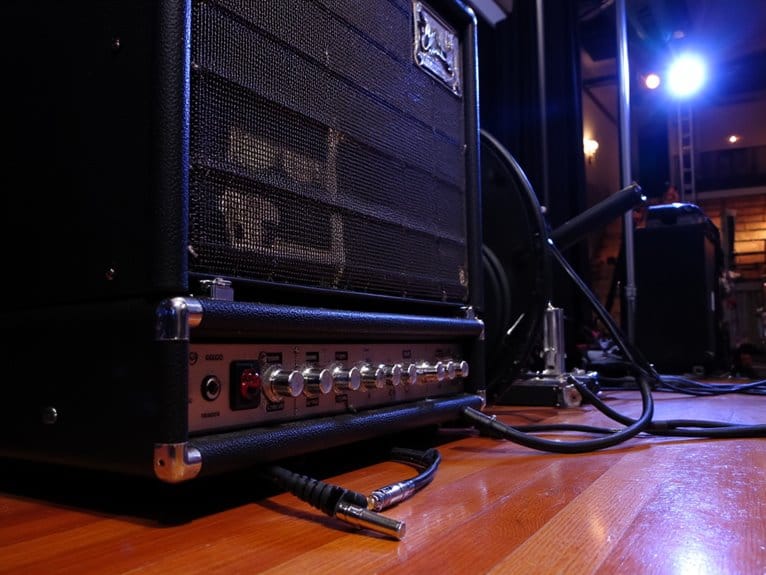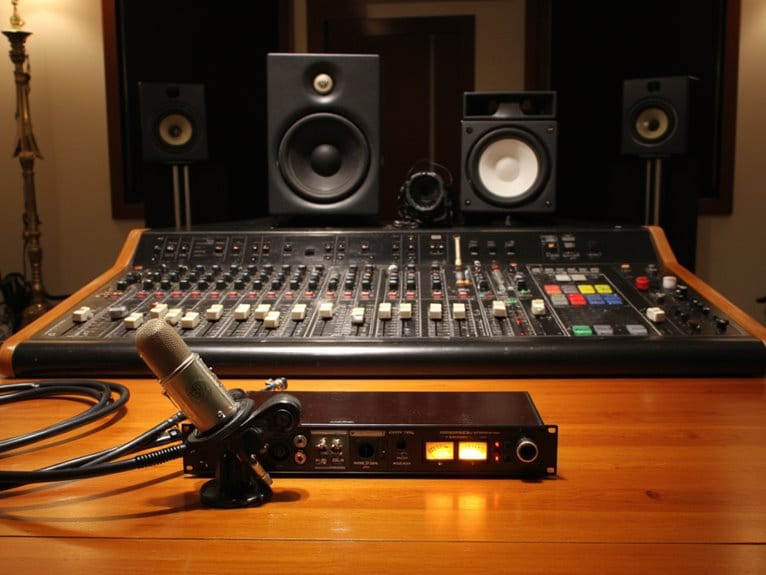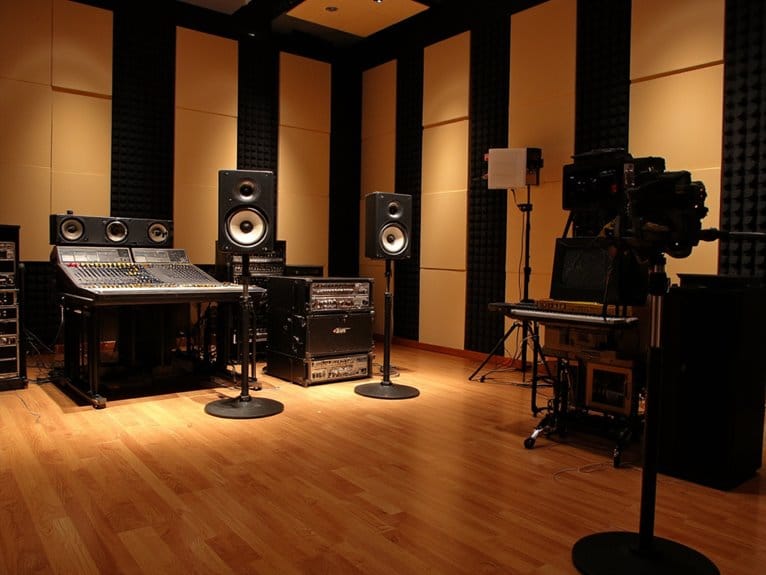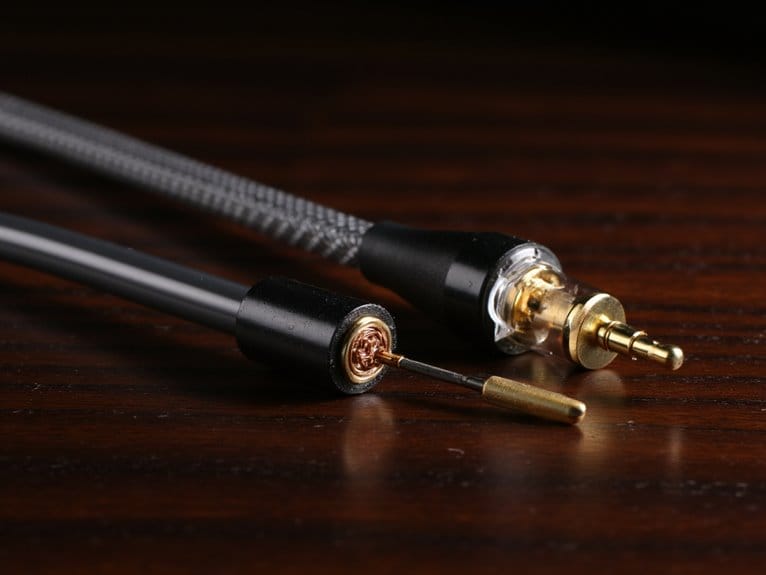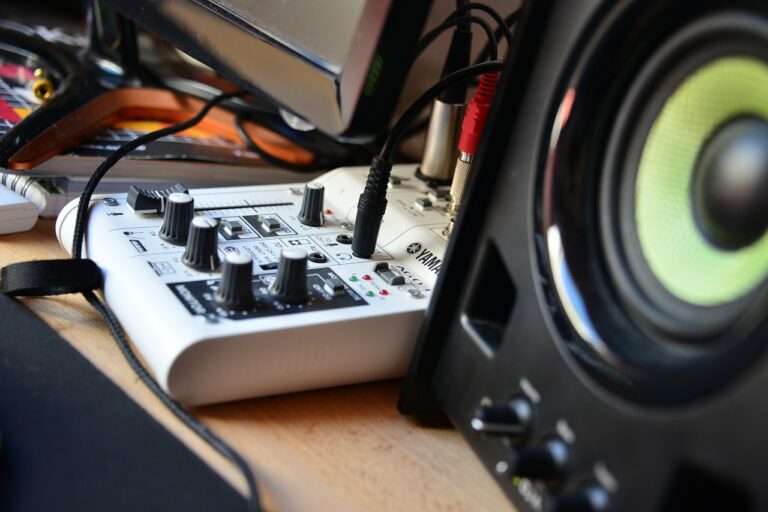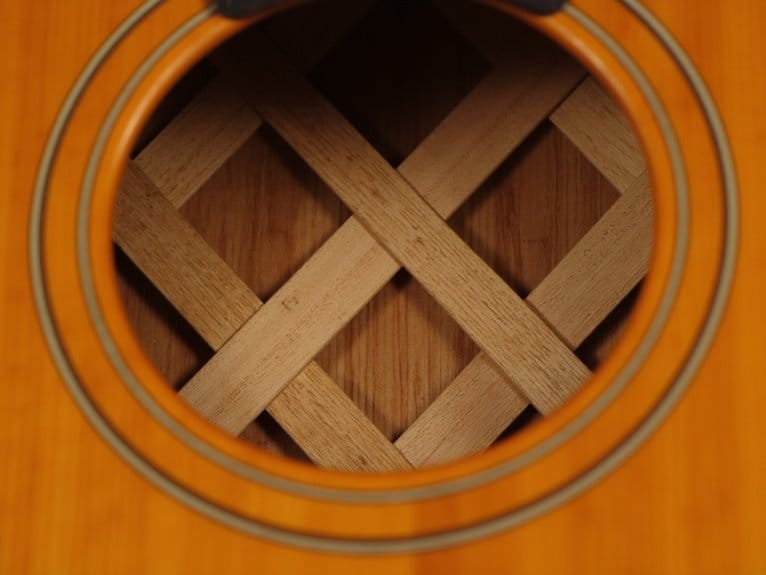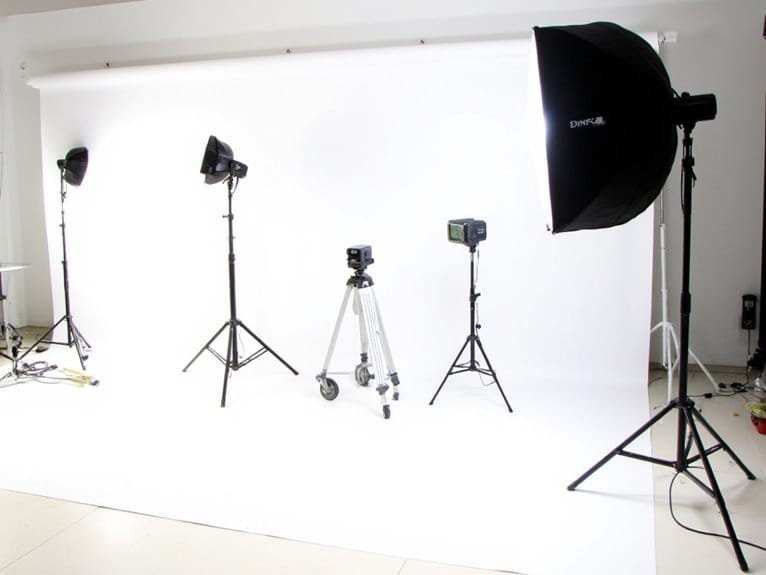Bass Amplifier Power Requirements for Different Situations
You’ll need 15-60 watts for bedroom practice, with solid-state amps offering headphone outputs for silent sessions. Band rehearsals require 100+ watts to cut through the mix, while club gigs demand 300-500 watts minimum for proper headroom against audience chatter. Outdoor festivals push requirements beyond 1000 watts, with large venues needing 4000-15,000 watts total. Remember that bass frequencies eat power quickly, and running your amp at 70-80% capacity prevents clipping while maintaining tone quality and equipment longevity throughout these varied performance scenarios.
We are supported by our audience. When you purchase through links on our site, we may earn an affiliate commission, at no extra cost for you. Learn more.
Notable Insights
- Home practice requires 15-60 watts with headphone output, while band rehearsals need 100+ watts for clarity.
- Club gigs demand 300-500 watts minimum to cut through audience noise and maintain headroom in larger spaces.
- Outdoor festivals require exceeding 1000 watts, with large venues needing 4000-15,000 watts total for proper coverage.
- Bass frequencies need more wattage than guitars due to power requirements for low-end clarity and projection.
- Proper impedance matching between amp heads and speaker cabinets prevents damage and ensures optimal power delivery.
Home Practice and Bedroom Sessions
When selecting a bass amp for home practice, I’ve found that most players underestimate how little power they actually need to achieve satisfying tone and volume in bedroom settings.
You’ll discover that 15 to 60 watts provides ample headroom for practice settings without overwhelming your neighbors or sacrificing tonal quality. I typically recommend solid-state amps between 20-50 watts, paired with 8 to 12-inch speakers for ideal portability and sound projection in confined spaces.
The key lies in effective volume control through adjustable gain and master volume settings, which allow precise output management at bedroom levels. A headphone output is essential for silent practice, regardless of amp wattage. Many modern practice amps also feature auxiliary inputs that allow you to play along with backing tracks or songs from your phone or music player.
Combo units offer the most practical solution, combining amplifier and speaker components while maintaining compact dimensions that fit seamlessly into your living space. These units are lower in cost compared to separate head and cabinet configurations, making them particularly attractive for home practice scenarios. Additionally, an all-in-one combo setup eliminates the risk of forgetting essential components when moving your practice sessions between different locations.
Band Rehearsals and Small Venues
As you move from bedroom practice to band rehearsals and small venues, you’ll need considerably more power to cut through the mix of drums, guitars, and vocals that typically populate these environments.
Your amp wattage should range between 65 to 200 watts, with 100+ watts being the sweet spot for maintaining clarity when competing with aggressive drummers.
I’ve found that bass frequencies demand higher wattage than guitar amps to preserve their fundamental presence in the mix.
Consider combo amps like the Fender Rumble 500 for convenience, or separate heads and cabinets if your tonal preference leans toward flexibility.
Standard 15-amp outlets handle most small band setups, though you’ll want to verify venue power capacity beforehand to avoid embarrassing equipment failures mid-rehearsal.
Running your amp at 70-80% capacity prevents unwanted clipping while ensuring you have adequate headroom for dynamic playing passages.
Quality metal chassis construction becomes increasingly important as you transport your amp between venues and rehearsal spaces.
Club Gigs and Medium-Sized Rooms
The shift from small rehearsal spaces to club gigs and medium-sized rooms represents a significant leap in power requirements, where your trusty 100-watt amp suddenly feels inadequate against the acoustic demands of larger spaces and more energetic audiences.
Moving from practice rooms to live venues exposes the harsh reality that your 100-watt amp can’t compete with drums and crowds.
You’ll need 300-500 watts to maintain proper power management while competing with live drums and energetic crowds. A 300-watt baseline provides sufficient headroom for most club environments, though 500 watts offers better flexibility for louder venues.
Sound clarity becomes essential when audience chatter and room acoustics challenge your low-end presence. Popular configurations like 2×10″ or 1×15″ cabinets balance portability with volume output, while brands like Fender Rumble 500 deliver reliable performance. Higher wattage provides better dynamic range and prevents tone degradation under demanding performance conditions.
Having extra wattage prevents constantly pushing your amp to maximum output, preserving both tone quality and equipment longevity. While smaller guitar amps typically range from 5-20 watts for practice, bass applications in club settings demand significantly higher wattage requirements to properly project low frequencies through the mix.
Outdoor Festivals and Large Venues
Moving beyond club environments, outdoor festivals and large venues demand a completely different approach to bass amplification, where the power requirements jump dramatically from hundreds of watts to thousands.
You’ll need bass amps exceeding 1000 watts each to maintain low-frequency presence without distortion across those sprawling festival grounds. For bands playing to 750-1000 people outdoors, proper power distribution typically involves 6000 watts for subwoofers and 1500 watts for mid-high frequencies.
Sound coverage becomes your biggest challenge when you’re dealing with audience distances of 100 to 300 feet. I’ve seen rock performances in stadiums require between 4000 and 15,000 watts total, utilizing multiple speaker clusters strategically positioned throughout the venue to guarantee consistent volume levels reach every corner of your audience.
Power Matching With Speaker Cabinets
When you’re selecting speaker cabinets for your bass amp head, understanding the relationship between impedance and power becomes absolutely critical for both safety and performance. I’ve learned that impedance calculations determine how much power your amp delivers, while RMS ratings indicate the continuous power your speakers can handle safely without damage.
| Cabinet Configuration | Total Impedance | Power Output |
|---|---|---|
| One 8Ω cabinet | 8Ω | Lower |
| Two 8Ω parallel | 4Ω | Higher |
| Two 4Ω parallel | 2Ω | Dangerous |
You’ll want to match your amplifier’s wattage to your cabinet’s RMS rating, not the program rating that’s typically double the continuous handling. Running below 4Ω risks damaging most bass amp heads, so careful planning prevents costly repairs.
Frequently Asked Questions
Do Tube Amps Really Sound Better Than Solid-State Amps for Bass?
Whether tube vs solid state sounds “better” depends on your preferences. Tube amps offer warm, harmonically rich tonal characteristics with musical distortion, while solid-state provides clean accuracy and tight bass control.
How Much Does Speaker Efficiency Affect My Amplifier Power Requirements?
Speaker sensitivity dramatically affects your amplifier power requirements. Higher sensitivity speakers need less power to achieve the same volume levels. If you’re upgrading speakers, consider their power handling alongside sensitivity for ideal amplifier matching.
Can I Damage My Amp by Using It With Mismatched Impedance?
Yes, you can damage your amp with impedance mismatch. Lower speaker impedance forces excess current draw, risking overheating. Higher impedance reduces power but offers better amp protection. Tube amps are especially vulnerable to mismatch damage.
On a final note
You’ll find that choosing the right bass amp power isn’t just about cranking watts to eleven, though I’ve certainly made that mistake before. From bedroom practice sessions requiring 15-25 watts to festival stages demanding 300+ watts, your power needs scale dramatically with venue size, band volume, and speaker efficiency. Remember, you’re matching not just watts but impedance, headroom, and tone quality to create the foundation that’ll keep your rhythm section locked tight.

